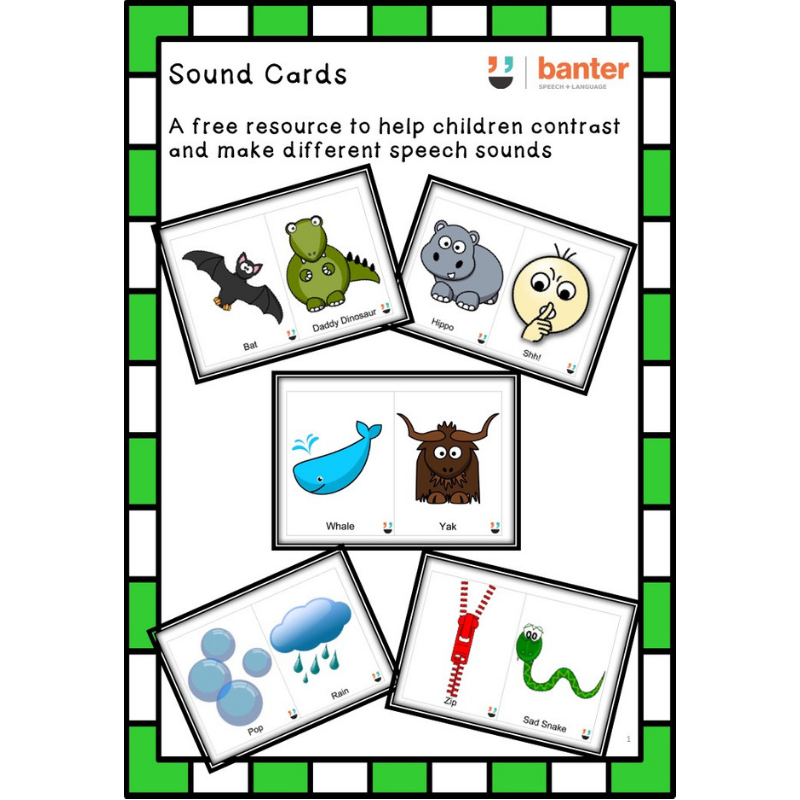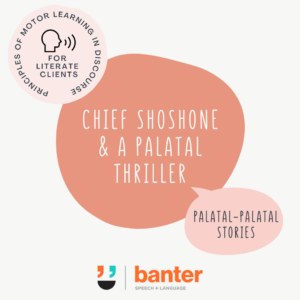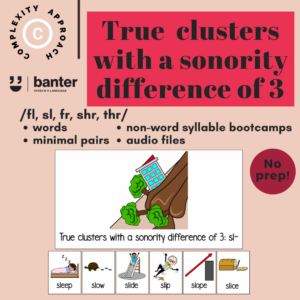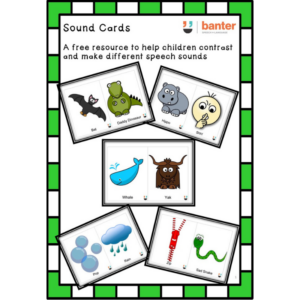(A100) Sound Cards
$0.00
When we work with kids who can only say a few speech sounds, one of our first goals is often to increase the number of different sounds they can hear and say. For many children – especially young ones – this can be tricky because you can’t see or touch sounds. This makes it hard for kids to contrast similar sounds, e.g. to distinguish short “stop” sounds like /k/ from /t/, or hissy “fricative” sounds like /s/ from /f/.
To help kids tell different speech sounds apart, and to encourage them to give new sounds a go, we use these simple pictures in our clinic to represent speech sounds. We base this approach on the wonderful work of researchers like Adele Miccio and Mary Elbert.
Description
Some kids can only say a few speech sounds, including many kids with speech sound disorders.*
When I work with these kids, one of my first goals is often to increase the number of different sounds they can hear and say. For many children – especially young ones – this can be tricky because you can’t see or touch sounds. This makes it hard for kids to contrast similar sounds, e.g. to distinguish short “stop” sounds like /k/ from /t/, or hissy “fricative” sounds like /s/ from /f/.
To help kids tell different speech sounds apart, and to encourage them to give new sounds a go, we use simple pictures in our clinic to represent speech sounds. We base this approach on the wonderful work of researchers like Adele Miccio and Mary Elbert who’ve been arguing for this approach since at least the mid-1990s.
To help our clients and their families practice at home, we give them copies of picture cards we’ve made for each sound. We’re now pleased to provide our cards as a free download to anyone else who might find them useful.
Please feel free to share them: our only conditions are that the cards stay free for everyone (i.e. they are not onsold) and that credit is given to Drs Miccio and Elbert who pioneered the approach we’ve adapted for use in our clinic.
A big thank you to our wonderful Speech Pathologist, Cherie, for making such lovely cards.
Enjoy!
For more information we’ve summarised:
-
-
the ages at which most kids learn different speech sounds here;
-
common developmental error patterns (and when you should be concerned about them) here;
-
‘red flags’ for hearing related speech sound error patterns here;
-
the Cycles Approach to treatment here;
-
the Complexity Approach to treatment here; and
- the Contrastive Approach – Minimal and Maximal Pairs to treatment here.
-
Principal source: Miccio, A.W. & Elbert, M. (1996). Enhancing Stimulability: A Treatment Program. Journal Communication Disorders, 29, 335-351.








Reviews
There are no reviews yet.